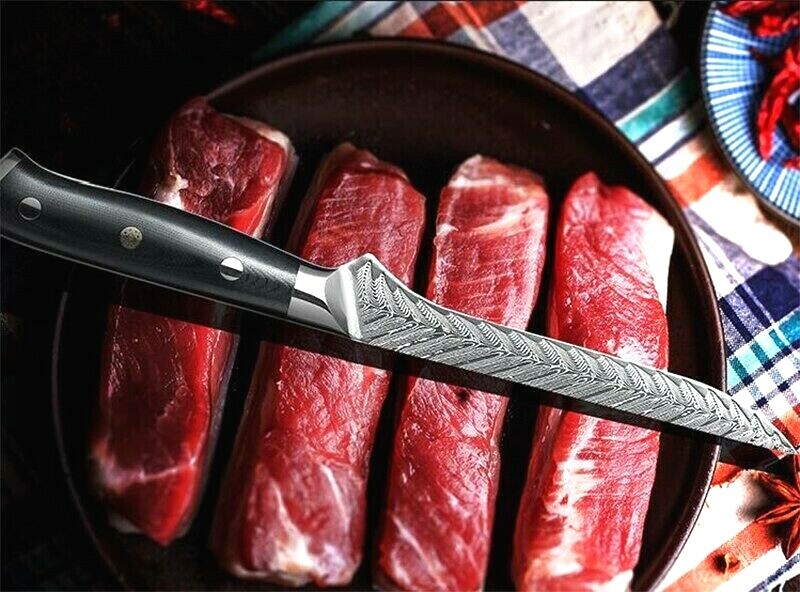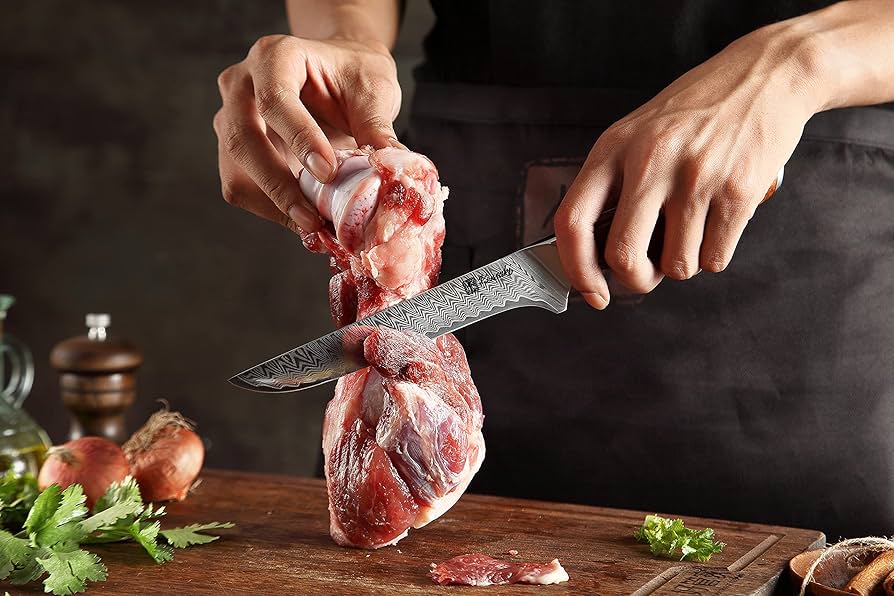In the world of culinary arts, the boning knife for charcuterie stands as an indispensable tool for chefs and cooking enthusiasts alike. Whether you’re a professional chef or a home cook, understanding the nuances of this specialized knife can significantly enhance your kitchen skills and the quality of your dishes. This article delves into the features, uses, and benefits of a boning knife, particularly in the art of charcuterie.

What is a Boning Knife?
A boning knife is a type of kitchen knife with a sharp, narrow blade designed for removing bones from meat, poultry, and fish. It is distinguished by its flexibility, allowing chefs to maneuver around bones with precision. The pointed tip and narrow blade are ideal for making deep cuts, essential in preparing delicate charcuterie meats.
The Role of a Boning Knife in Charcuterie
Charcuterie is the art of preparing and assembling cured meats and other meat products. A boning knife is crucial in this process, as it allows for the precise removal of bones without damaging the surrounding meat. This precision ensures that the meat retains its texture and flavor, essential for high-quality charcuterie.
Key Features of a Boning Knife
- Blade Flexibility: Offers control and precision when cutting around bones.
- Sharpness: A razor-sharp edge is crucial for clean cuts.
- Handle Comfort: Ergonomic design for prolonged use without fatigue.
Choosing the Right Boning Knife
When selecting a boning knife for charcuterie, consider the following factors:
Blade Material
Stainless steel and high-carbon steel are popular choices. Stainless steel offers corrosion resistance, while high-carbon steel provides superior sharpness.
Handle Design
Look for a handle that offers a comfortable grip and is made from durable materials like wood or synthetic composites.
How to Use a Boning Knife Effectively
To maximize the benefits of your boning knife, use the following techniques:
Proper Grip and Handling
Mastering the grip is crucial. Hold the handle firmly with your dominant hand, and guide the blade with your other hand for precision cutting. For more insights, visit boning knife grip styles.
Maintaining Sharpness
Regular honing and sharpening are necessary to keep the blade in optimal condition. Avoid cutting on hard surfaces to prevent dulling.
Common Mistakes to Avoid
Even experienced chefs can make mistakes when using a boning knife. Here are some common pitfalls:
Incorrect Blade Angle
Ensure the blade is angled correctly to avoid damaging the meat or the knife’s edge.
Using Excessive Force
Let the sharpness of the blade do the work. Excessive force can lead to accidents and uneven cuts.
Caring for Your Boning Knife
Proper maintenance is essential for the longevity of your boning knife:
Cleaning and Storage
Clean the knife immediately after use with mild detergent and water. Dry thoroughly before storing in a knife block or magnetic strip.
Regular Sharpening
Use a whetstone or professional sharpening service to maintain the blade’s edge. For additional guidance, consider visiting should you buy a boning knife.
Integrating a Boning Knife into Your Culinary Arsenal
Incorporating a boning knife into your kitchen enhances your ability to prepare a variety of dishes. Its precision and versatility make it a valuable asset for those passionate about cooking.
Conclusion
The boning knife for charcuterie is more than just a toolit’s an extension of a chef’s skill and creativity. By understanding its features, proper usage, and maintenance, you can elevate your culinary creations to new heights. For more information on boning knives, you can refer to Wikipedia’s page on boning knives.

FAQ
1. What distinguishes a boning knife from other knives?
A boning knife is specifically designed with a narrow, flexible blade to remove bones without damaging the meat, making it ideal for charcuterie.
2. Can a boning knife be used for other purposes?
Yes, it can be used for filleting fish and trimming fat, making it a versatile tool in the kitchen.
3. How often should a boning knife be sharpened?
Regular honing is recommended after each use, while sharpening should be done every few months, depending on usage.
This article contains affiliate links. We may earn a commission at no extra cost to you.


